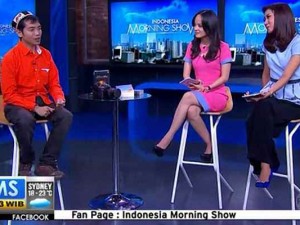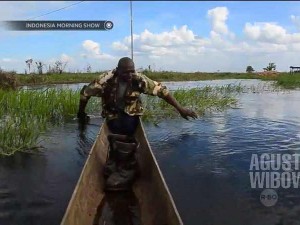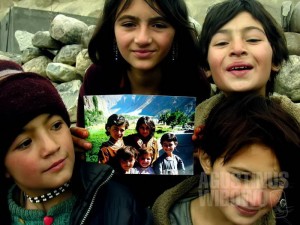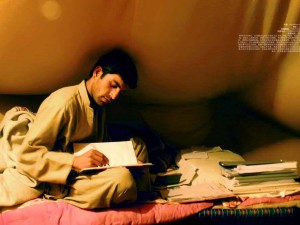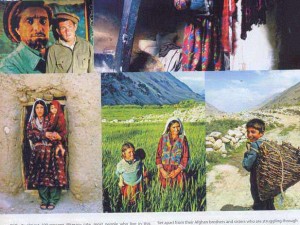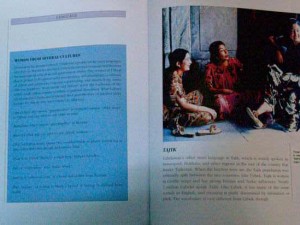photography
[VIDEO] Net TV (2014): Berwisata Sekaligus Belajar
The Palace of Illusions
#1Pic1Day: Dua Tahun Sebelum dan Sesudah | Two Years Before, Two Years After (Sust, Pakistan, 2006)
Traveler【旅行家】(2013):视觉
巴彦乌列盖(Bayan Olgii)是蒙古最西部且海拔最高的省份,如果从乌兰巴托前往,需忍受长达70 多个小时、十分颠簸的车程,但仍值得一去。在当地生活的哈萨克族人至今保留着伊斯兰传统生活方式,由于穆斯林在饮酒上的限制,犯罪事件相对较少,因此在当地旅行比在蒙古其他地方安全许多。每年在乌列盖都会举办金鹰节(Golden Eagle Festival),当地数百名猎鹰高手参与角逐,成千上万的国际游客也会前来观赛。节日期间,还会举行哈萨克族的传统服饰狂欢秀。
[VIDEO] Net TV (2013): Travel Photographer
Tempo (2013): Speaking about Poetry and Photography (Makassar International Writers Festival 2013)
DetikTravel (2013): Tentang Etika Fotografi Perjalanan
Traveler【旅行家】(2012):视觉
巴彦乌列盖(Bayan Olgii)是蒙古最西部且海拔最高的省份,如果从乌兰巴托前往,需忍受长达70 多个小时、十分颠簸的车程,但仍值得一去。在当地生活的哈萨克族人至今保留着伊斯兰传统生活方式,由于穆斯林在饮酒上的限制,犯罪事件相对较少,因此在当地旅行比在蒙古其他地方安全许多。每年在乌列盖都会举办金鹰节(Golden Eagle Festival),当地数百名猎鹰高手参与角逐,成千上万的国际游客也会前来观赛。节日期间,还会举行哈萨克族的传统服饰狂欢秀。
Traveler【旅行家】(2012):视觉
马背叼羊是阿富汗的国民运动,也深受中亚国家如乌兹别克斯坦、塔吉克斯坦、吉尔吉斯斯坦、哈萨克斯坦、土库曼斯坦的欢迎,多在冬季举行。这种运动类似于马球,但使用的球是无头的牲畜尸体。最大的国家级马背叼羊比赛是在阿富汗的马扎举行的。新年22日这天,标志着冬天的结束,春天的开始。比赛时,骑手通常身穿厚衣服、佩戴头套、脚踏靴子、手持皮鞭。靴子通常带有高跟,紧锁入与马鞍连接的脚踏处,这样有助于骑手倾斜到一侧拾取小牛。马背叼羊运动显示了阿富汗精神:勇气、骄傲、虔诚、公平竞争、力量、耐力、阳刚之气等。人们认为一个好的马背叼羊球员宁愿勇敢地死去,也不懦弱地活着。
Traveler【旅行家】(2011):视界
位于阿富汗东北部的瓦罕走廊是一个狭长地带,主要居住着Wakhi人,他们讲Wakhi语,并信奉伊斯兰教。与大部分阿富汗穆斯林相比,Wakhi人是相对温和的。这里的女人无须终日蒙面,可以自由地谈论异性。他们的生活主要依靠农业和畜牧业。每天,孩子们会以自己所在的村子为单位,在一起给牲畜喂食青草。在这里,经常能够看到成百上千的牛羊聚合着穿过高山和草原,而孩子们则在平原上等待着牛羊被牧民们带回来。
Traveler【旅行家】(2011):伊朗旅游的“后ADS时代”: 既小众,又高端
伊朗,一个国际政治里的高频词汇,一个美国眼中的高危国家,还是一个全球游客心目中的神秘国度。作为旅游目的地,伊朗还属于中东地区的新军:2010年全年,伊朗的外国游客入境人数为312.5万人次,而从伊朗驻中国大使馆办理赴伊签证的人数仅约1.8万人次;它的邻国土耳其在2003年就曾有过单月入境超过200万人次的记录,2010年更是吸引外国游客2860万人次。

